Church Bell
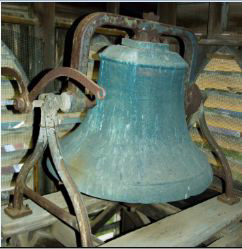
Our Sacred Heart Church Bell sits in our bell tower supported by an old timber base above the east end of the church. It is only accessible by ladder through a small hatch about 40 feet above the churches main floor. Cast in the bell is a casting date and manufacturer name. The casting mark on the bell shows as “1890 Kaye & Co Louisville KY”. The bell is made of bronze (about 80% copper, 20%, tin) is 39 inches across at the lip and weighs about 1200 pounds. This bell is over three inches thick at some parts.
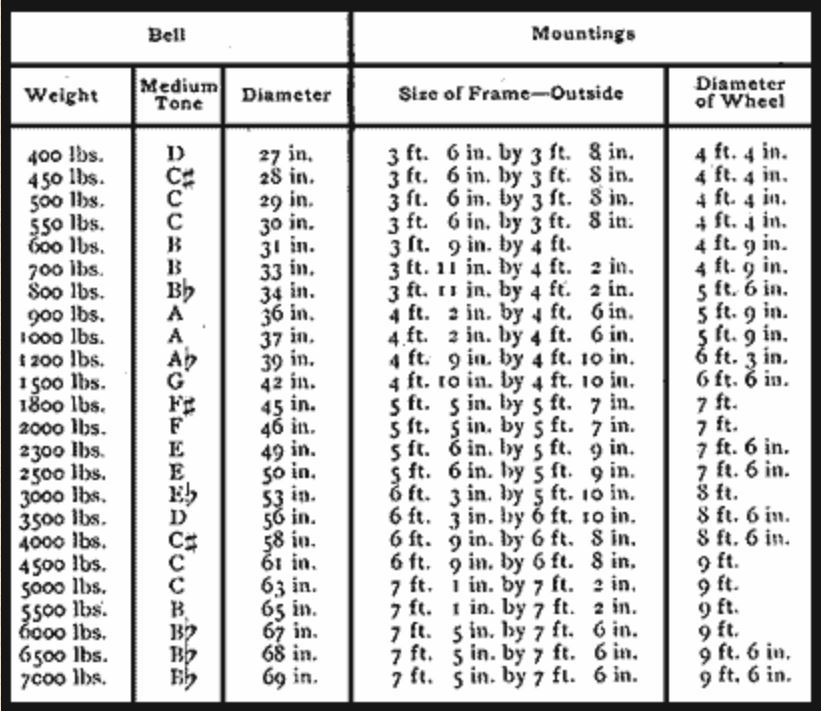
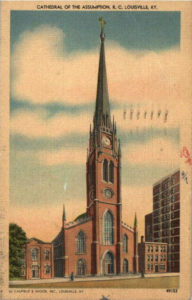
Louisville, KY.
The Kaye Foundry was located at Second and Water Streets in Louisville, Kentucky. William Kaye, Louisville mayor from 1863 to 1865 (last two years of the Civil War) started the foundry in 1841. After Kaye died in 1890, his son Samuel J. Kaye ran the business, which closed in 1895. The Kaye Foundry specialized in manufacturing bells of all sorts for steamboats, plantations, churches, schools, factories, and courthouses. According to William Kaye’s obituary, “his success speaks for itself, for there are few cities in the United States where the Kaye bell is not known. Every engine house and nearly every church in his city has bells of his make, and he had a very large trade in the South. Even in the North and West, his trade reached.” A bell cast by the foundry tolled V-E Day in St. Louis in 1945. A Kaye bell still hangs in Louisville’s Cathedral of the Assumption and another is on the well-known steamboat Delta Queen. The foundry also manufactured brass castings, burning brands, chimes and peals. The Kaye Foundry was also known as Kaye & Co., and Kaye Bell and Brass Foundry.
Casting date versus the bell install date
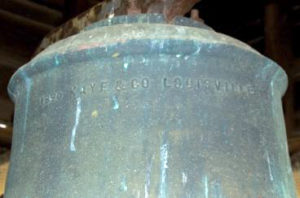
The casting date itself creates a little bit of a mystery because it doesn’t align with the original build date of St. Mary’s or the rebuild date of Sacred Heart church. The original church was built in 1882, named St. Mary’s, and was hit by a tornado in November of 1883.
So, if the casting date of the bell is 1890 and the church was being used by June of 1884. …
• It only took a year to rebuild the church; why would they wait so long to get a bell? Most likely it took that long before a bell could be afforded?
We know the original church did not have a bell when it was first built but did the church have a bell tower? I would think so but I wish we could locate a picture of it to confirm that. Whatever the story, my guess would be the original church didn’t have a bell, the Ladies Society was saving for one when the tornado came and that setback delayed getting one until 1890. Jay Bynum’s history of Sacred Heart tells us they had $26 saved towards it before the tornado. There were approximately 100 families in the church at that time to give us an idea of how many people would have been supporting the effort. Bronze church bells of this age and size start at $6000 in today’s market.
State of the bell
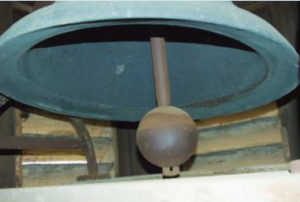
The Bell would be approximately 122 years old at the time of this writing. Inspection shows significant wear in several locations on the bell. The most notable areas are where the rope, used to ring the bell, is attached to the bell crank, the wear on the clapper and the wear on the clapper pivot. Some wear is seen on the sound bow at two sides of the inside of the bell where the clapper strikes. The the rope and that is more than 2/3 worn through. A few more years ringing the bell with the rope may have seen that wear all the way through. The clapper itself is made of cast iron and has cupped out significantly where it has struck the sound bow. Enough so that it was not ringing the bell with the clarity possible until it was rotated to an unworn spot. Another curious condition of the bell is the clapper pivot where the clapper-stem attaches to the head of the bell. This is rotated about 20 degrees from the direction of the bell swing. Almost like the bell clapper assembly was taken off of the bell and then not reassembled correctly. The Clapper itself has a casting date that is “1876” and is different from the main bell’s casting date of “1890”. (So….did the factory just have a lot of these clappers already made and used it on this 1890 bell? Or was this clapper a part of the original bell of the church?) Judging from the wear to the clapper pivot, it appears this rotation was done many years ago and created a bit of an issue when installing the automatic ringer. The rotation can be seen in the image when looking at the rectangular tab at the bottom of the Clapper ball. This tab should have been pointing right and left, which is the direction of the bell travel when rung.
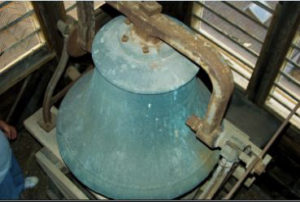
The automatic ringer
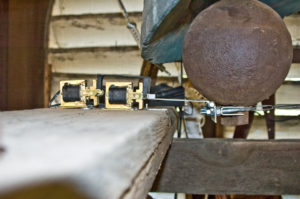
We have installed an automatic ringer that will bring back the ringing of the bell to Sacred Heart. It is a programmable, electromechanical ringer that has an atomic clock link built in to make sure the time is always accurate to within 1 second per day. It resets itself each morning by receiving the time of day with a radio signal from the national time standard radio, WWV in Fort Collins, Colorado. The ringer has a battery backup to preserve the clock time and the programs, in the event of a power failure. If we lose power, the bell won’t ring, but we will pick up where we left off as soon as power returns.
The bell will be set to ring 5 minutes before each Mass for a period of one minute or 25 peals. It will also ring the ‘Angelus’ ring at noon and 6:00 PM each day (except when there would be a conflict with a scheduled Mass time). There will be a manually actuated push button that will activate bell with a ‘Funeral’ ring where the bell will toll every 10 seconds for five minutes. We also have the ability to ring the bell on the hour each day from 9:00am to 6:00pm if we wish.
The automatic ringer pulls the clapper instead of ‘rocking’ the bell. This should help in preserving the bell longer since there will be no moving of the bell on its pivots or a shifting of weight in the bell tower. It will be good for the church building too.
